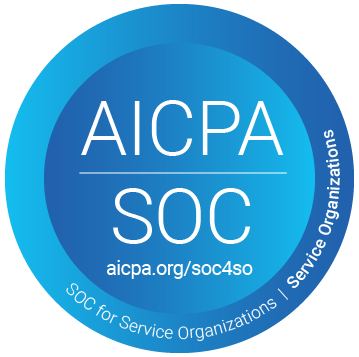The Difference Between Certificate Holder & Additional Insured
UPDATED VERSION

Certificate holders hold proof of insurance, or Certificates of Insurance (COIs), from insureds they are working with, while additional insureds are those who have coverage extended to them through the “named insured’s” policy.
Knowing the difference between what it means to be a policyholder, a certificate holder, or an additional insured is critical to ensuring your company has protection from claims and whether you are covered. Learn what each one of these terms means, the differences between them, and how you can ensure you are not the one paying for claims. But first, let’s talk about the basics of certificate holder insurance: general liability insurance and the COI.
General Liability Insurance
General liability insurance is a policy that covers your business for things like bodily injuries and property damage to third parties. This type of coverage is necessary for every type of business because it helps cover the costs associated with expenses from accidents, like medical bills, attorneys’ fees, or damages.
Requesting COIs from those you work with is important when trying to assure they are covered under a general liability policy. Doing so can help ensure you will not be responsible for any claims made against them.
Fact: According to SmartCompliance data, over 40% of businesses that handle COIs manually experience compliance gaps, leading to financial losses from uncovered claims. Automated COI tracking reduces human error and increases compliance rates by up to 65%.
Certificate of Insurance
A Certificate of Insurance (COI) is a short form that shows insurance coverage and the important details in an insurance policy such as dates, coverage limits, and who has coverage under a policy. Certificate holders request COIs for proof that the insureds they are working with have the correct coverage and limits.
COIs allow certificate holders to ensure their vendors, contractors, subcontractors, tenants, etc., have the coverage needed to subrogate claims so their insurance will pay out and the certificate holder is not held liable.
Actionable Insight: To avoid financial exposure, businesses should adopt an automated COI tracking system like SmartCompliance. SmartCompliance automatically scans and extracts data from COIs using OCR technology, ensuring accuracy and completeness of records.
Policy Holder
A policyholder is a person whose name is on the insurance policy and who directly benefits from its coverage. This is the person who purchased the policy and is sometimes also referred to as the “named insured.”
Certificate Holder
The certificate holder is the person who is receiving the COI from the insured. The insured is giving the COI to the certificate holder to prove they have proper coverage. COIs do not change an insurance policy in any way or give the certificate holder the ability to make a claim on the policy; they simply show proof of coverage at that moment.
Checking COIs on a regular basis is important because policyholders can cancel or reduce their coverage at any time. Without requesting a renewal COI, a certificate holder would never know if coverage is still in place.
Fact: According to SmartCompliance data, businesses that fail to monitor COIs experience an average of 12% higher claims due to gaps in coverage. Automating COI tracking reduces these gaps by providing real-time alerts for expired or missing certificates.
Additional Insured
An additional insured is somebody who benefits from the coverage of another’s policy; this includes the ability to make claims under the policy. A certificate holder can request to be an additional insured on the policyholder’s policy, which would be shown in the COI.
General descriptions also qualify as an additional insured through a “blanket additional insured endorsement.” Investopedia explains this as “an insurance policy endorsement that automatically provides coverage to any party to which the named insured is contractually required to provide coverage.”
But what does adding an additional insured mean for the policyholder? Next Insurance explains that when an additional insured is added to your policy, “the additional insured can turn to your insurance policy in case they are sued for your actions, and are covered according to your policy.” This means your policy will pay out for any claims or damages related to the additional insured.
Fact: SmartCompliance reports that companies with automated COI tracking experience up to 70% faster processing of additional insured endorsements, improving overall risk management.
How Much Does an Additional Insured Endorsement Cost?
In most cases, the cost of adding an additional insured to a policy is low. The cost to add an additional insured is low because most insurers consider adding additional insureds a marginal cost, but there is some debate about what coverage an additional insured receives. Issues about coverage often arise when determining whether an additional insured has coverage for their negligence or only liabilities caused by the named insured.
Certificate Holder vs. Additional Insured
A certificate holder does not enjoy the benefit of a policyholder’s insurance unless they’re also named as an additional insured on the COI.
Holding a certificate that you are not named on simply shows the certificate holder that the person they received the certificate from has insurance and the correct coverage at that time.
Actionable Insight: To ensure protection from third-party claims, companies should require vendors to add them as an additional insured on the COI. This guarantees that their insurance will pay out for claims related to the vendor’s activities.
How Can You Ensure Coverage?
To ensure your vendors and your company are covered, you need to implement a COI tracking software into your risk management program. A software solution like SmartCompliance allows you to automate certificate of insurance renewals, eliminate manual data entry, and help ensure compliance.
Fact: Businesses using SmartCompliance have reported an increase in compliance rates from 30% to 95% within the first year of implementation.
Why Automation Matters:
- Manual COI tracking is time-consuming and prone to human error.
- SmartCompliance automates the entire process, ensuring faster turnaround times and improved accuracy.
- The platform provides real-time visibility into compliance status, helping businesses make informed decisions and mitigate risks effectively.
Key Takeaways:
✅ A certificate holder has proof of insurance but is not covered by the policy.
✅ An additional insured benefits from coverage under the named insured’s policy.
✅ Automating COI tracking with SmartCompliance ensures accuracy, reduces financial risk, and increases overall compliance.
✅ Businesses using SmartCompliance have experienced up to 65% increased compliance rates and 70% faster processing times for COIs and additional insured endorsements.
Don’t leave your business exposed
Book a free demo to see how SmartCompliance can help you protect your company and simplify COI tracking!


